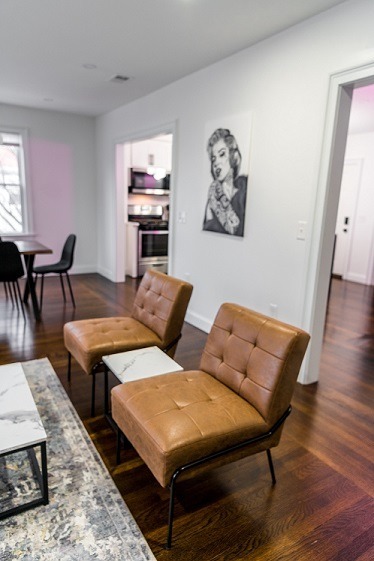
It’s hard to find a starter home these days. Across the United States — and especially where younger generations are hunting — there are rarely listings for less than $300,000, let alone anything that fits the popular image of a first-time buyer’s home.
This means younger buyers are coming up with their own ideas of what a starter home looks like. And often, it looks like a condo.
A condo — short, of course, for condominium — is a unit on a multi-unit property that is deeded to the buyer of the unit. Condo owners often share walls. But condos can be detached homes, too.
So, is the condo the new starter home? For many young buyers, the answer is yes. Here’s why.
Starter Homes? They Don’t Make ‘Em Like They Used To

U.S. builders aren’t making small houses. Parcels aren’t cheap. Building materials and workers are in short supply, so prices are high for them, too. The costs of covering government permits and fees add up. The cumulative costs of all these components mean it’s hard to build a home for any amount under $200K.
With land, components, appliances, and handiwork increasingly expensive, developers want to maximize their returns. So they’ve been building big. If a small house does turn up in today’s listings, its price tag isn’t so small.
It’s a major change over just a few decades. When the Baby Boomers were starting out, most houses were compact living spaces, under 1,400 square feet. But that’s true of just 8% of houses being built today. So condo-sized planning is, it turns out, an old-timey thing.
In any case, who says a “starter home” has to be a big, freestanding house? Show me a typical home in the $200,000-$250,000 range these days, and I’ll show you a condo.
In cities where upzoning is on the rise, builders are finally letting go of the compulsion to erect single-unit, detached homes. And that’s a good thing. They can now offer what buyers actually want. Not that prices alone matter to younger generations. A large, freestanding house simply might not fit in with many younger buyers’ ideas about the future of housing, and their place in it.
The Outer Suburbs Aren’t the Draw They Once Were
Driving from an office downtown to a home in the suburbs. It used to be what many homebuyers aspired to do. Today, living in a walkable downtown area is at least as attractive to many young buyers. Millennials and younger people (people who were born after 1981) have come of age with climate awareness, and are conscious of their energy consumption, too. For many first-time buyers, that’s another plus for a downsized lifestyle.
Granted, when the pandemic took hold, some of the high-density cities and their outskirts cleared out — but other people moved in.
The pandemic caused another new trend. One that’s here to stay. When people buy homes, they are buying more than places to live. They’re buying spaces for remote offices and study areas. They’re meeting clients at home. They’re exercising at home. Condos usually have spaces that work well with these activities. They have outdoor garden patios, meeting halls, and co-working rooms.
In all these ways, millennials and post-millennials are transforming the way real estate is developed and sold.
Young professionals in search of big homes do exist, of course. But as a group, young buyers are struggling to deal with tuition debts. And even for young buyers with high incomes, student debt limits purchasing power. So, younger generations have had to keep their expectations in check. Buying a freestanding home at today’s prices means taking on formidable mortgage debt.
Too Much House? It’s a Matter of Priorities
The number of people in a U.S. household has been shrinking. And many buyers steer clear of getting “too much house.” As the homebuying population becomes more diverse, it’s also less able to count on gifts, or accumulations of generational wealth.
And even for young buyers with high incomes, buying as much house as they can might not seem appealing. For many younger buyers, it’s important to keep money aside, in order to purchase things like energy-efficient systems, entertainment, education, and memberships. And plenty of condo listings offer quality-of-life elements, like bike paths and walking trails.
When people talk about the pros and cons of condos, rules and regulations tend to come up on the negative side. Yes, there are plenty of rules and regulations, covenants and restrictions. But there’s another side to the coin. It’s something of a paradox, but condo living is freeing. The condo owner need not mow a lawn, shovel a driveway, or pressure-wash the siding. Condo owners only have to maintain and insure their own units. Heavy landscaping, exterior painting, roof replacement… All that’s handled by the association.
So, condos and townhomes work for younger people who don’t want to deal with home maintenance all the time. That said, there are charges for those supportive services. Together with monthly mortgage payments and taxes, housing costs for condos include monthly homeowners’ association dues.
A Good Investment? Some Condo Owners Have Long-Term Goals
Condos generally have more accessible price tags and mortgages. Many of them are in highly desirable settings. Condos in the right spots can be great homes, and also great investments.
So, a person who wants to buy a condo as a primary residence might consider future options. The purchase can be a practical move that allows a buyer to build equity in the unit, and then later rent it out if they decide to move on.
☛ Condos are sometimes off-limits to house-sharing or renting, or may have other restrictions. While condo properties differ in their approaches, learn how a condo deed is different from a standard house deed.
Condo buyers who might like to rent the space or use it for a home-sharing platform are wise to speak with the board before buying, to learn what’s actually possible. Even if condo owners at a given property rent out their units right now, future unit owners might not have that same option. For instance, some condo properties keep a certain level of owner-occupancy to qualify for FHA approvals or similar benefits.
Yes, Condos Tend to Be Cheaper. But They Have More to Offer Than Accessible Prices
Of course, price is a threshold question for many younger buyers. But it’s just one element of the condo’s allure.
Flexibility is the keynote of the younger generations. Sustainability is on their radar too.
No wonder smaller homes and condos are reshaping the real estate market.
Supporting References
Emily Badger for The New York Times: The Upshot – Whatever Happened to the Starter Home? (Sep. 25, 2022; citing CoreLogic and the U.S. Census Bureau).
Margot Adler for “All Things Considered” via NPR.org: Behind the Ever-Expanding American Dream House (Jul. 4, 2006).
Mike De Socio for NextAdvisor, in partnership with Time: Are Townhomes and Condos the New Starter Homes? Why This Couple Chose One (Nov. 9, 2022).
RocketMortgage.com: Are Condos a Good Investment?
Deeds.com: What the New Generations Want in a Home (Oct. 17, 2022).
And as linked.
Photo credits: Andrea Piacquadio and Andrea Davis, via Pexels.
